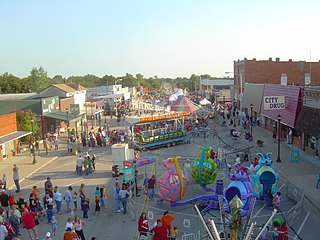
Coweta is a city in Wagoner County, Oklahoma, United States, a suburb of Tulsa. As of 2010, its population was 9,943. Part of the Creek Nation in Indian Territory before Oklahoma became a U.S. state, the town was first settled in 1840.
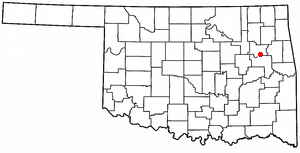
Tullahassee is a town in Wagoner County, Oklahoma, United States. The population was 106 in both the 2010 and the 2000 censuses. It was the location of Tullahassee Mission, an Indian boarding school that burned in 1880. Because their population in the community had declined, the Muscogee Creek gave the school to Creek Freedmen, paying to replace the main building, and relocated with their families to the area of Wealaka Mission.

Dwight Presbyterian Mission was one of the first American missions to the Native Americans. It was established near present-day Russellville, Arkansas in 1820 to serve the Arkansas Cherokees. After the Cherokee were required to move to Indian Territory in 1828, the mission was reestablished in 1829 near present-day Marble City, Oklahoma. The mission is listed on the National Register of Historic Places.

Alice Mary Robertson was an American educator, social worker, Native Americans' rights activist, government official, and politician who became the second woman to serve in the United States Congress, and the first from the state of Oklahoma. Robertson was the first woman to defeat an incumbent congressman. She was known for her strong personality, commitment to Native American issues, and anti-feminist stance.
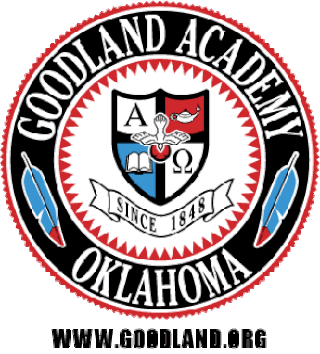
Goodland Academy is a boarding school located in Choctaw County, Oklahoma, 3 miles (4.8 km) southwest of Hugo in southeastern Oklahoma, U.S.. Founded in 1848 as a Presbyterian mission, it is the oldest private boarding school in Oklahoma still in operation.
Tullahassee Mission was a Presbyterian mission and school, founded on March 1, 1850 in the Creek Nation, Indian Territory by Robert Loughridge. This Presbyterian minister had been serving there since 1843, when he founded Koweta Mission. This mission was also originally built for Muscogee Creek students, and the community of Tullahassee developed there.

Robert McGill Loughridge was an American Presbyterian missionary who served among the Creek in Indian Territory. He attended Miami University, Ohio, and graduated in 1837. Loughridge was ordained as a Presbyterian minister in October 1842.
Wheelock Academy was the model academy for the Five Civilized Tribes' academies. It was started as a missionary school for Choctaw girls, and is still owned by the Choctaw nation. The school closed in 1955 and the only remaining Choctaw school, Jones Academy, became coeducational. The site is located 3 miles (4.8 km) east of Millerton in McCurtain County, Oklahoma. It is owned by the Choctaw Nation and is administered by the Bureau of Indian Affairs.
David McKellop Hodge was an attorney and interpreter for the Creek Nation, and was politically active. He became an orator and a leader on the Creek Nation Council at Muskogee, the capital.

During the American Civil War, most of what is now the U.S. state of Oklahoma was designated as the Indian Territory. It served as an unorganized region that had been set aside specifically for Native American tribes and was occupied mostly by tribes which had been removed from their ancestral lands in the Southeastern United States following the Indian Removal Act of 1830. As part of the Trans-Mississippi Theater, the Indian Territory was the scene of numerous skirmishes and seven officially recognized battles involving both Native American units allied with the Confederate States of America and Native Americans loyal to the United States government, as well as other Union and Confederate troops.
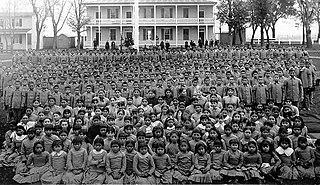
American Indian boarding schools, also known more recently as American Indian residential schools, were established in the United States from the mid-17th to the early 20th centuries with a primary objective of "civilizing" or assimilating Native American children and youth into European American culture. In the process, these schools denigrated Native American culture and made children give up their languages and religion. At the same time the schools provided a basic Western education. These boarding schools were first established by Christian missionaries of various denominations. The missionaries were often approved by the federal government to start both missions and schools on reservations, especially in the lightly populated areas of the West. In the late 19th and early 20th centuries especially, the government paid religious orders to provide basic education to Native American children on reservations, and later established its own schools on reservations. The Bureau of Indian Affairs (BIA) also founded additional off-reservation boarding schools based on the assimilation model. These sometimes drew children from a variety of tribes. In addition, religious orders established off-reservation schools.

The Nuyaka Mission site is located in Okmulgee County, Oklahoma, on McKeown Rd. just off N 120 Rd, approximately 15.7 miles west of the intersection of U.S. Route 75 and State Highway 56 in the City of Okmulgee, Oklahoma. The Nuyaka Mission is included on the National Register of Historic Places listings in Okmulgee County, Oklahoma. The mission was established by Alice Mary Robertson at the request of the Creek Council, and run by the Presbyterian Church.

The First Presbyterian Church of Tulsa was organized in 1885 in Creek Nation, Indian Territory, before statehood. It originally met in the store owned by brothers James M. Hall and Harry C. Hall, and was served by itinerant, circuit-riding ministers.

James Monroe Hall (1851–1935) came to the town of Tulsa in what was then known as Indian Territory. James and his brother, Harry C. Hall, operated a tent store that had followed the route of the Atlantic and Pacific Railroad and selected the site where the road would stop at Tulsa. They initially selected a site where the railroad crossed what would become Lewis Avenue and pitched a tent for the store there. This location was just inside the boundary of the Cherokee nation. When the Halls discovered that the Creek Nation had less restrictions on the activities of white merchants, they moved the store a couple of miles west to what would become First Street and erected a more permanent wooden building.
Wealaka was a community established in 1880 in the Creek Nation, Indian Territory. It is notable as the site of Wealaka Mission, which operated a school from 1882-1907. This school was primarily for Muscogee Creek children, but European Americans could attend for a fee. After statehood in 1907, the site was sold to private owners.
Samuel Checote (1819–1884) (Muscogee) was a political leader, military veteran, and a Methodist preacher in the Creek Nation, Indian Territory. He served two terms as the first principal chief of the tribe to be elected under their new constitution created after the American Civil War. He had to deal with continuing tensions among his people, as traditionalists opposed assimilation to European-American ways.
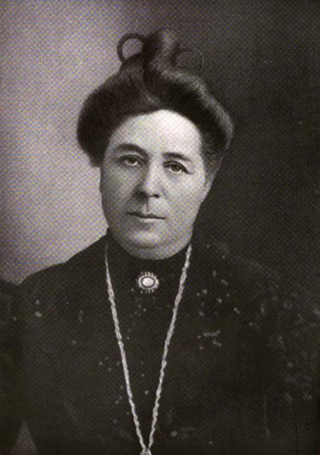
Lilah Denton Lindsey was a Native American philanthropist, civic leader, women's community organizer, temperance worker, and teacher. She was the first Muscogee woman to earn a college degree. She led numerous civic organizations and served as president of the Indian Territory Woman's Christian Temperance Union (WCTU).
Alfred Wright (1788–1853) was born in Connecticut in 1788. His parents could not afford to send him to school, so he worked on the family farm until he was 17 years old and could support his own education. He studied medicine at Williams College, then studied theology at Andover Seminary. After graduating from Andover, he was ordained as a Presbyterian minister. Soon, the American Board of Commissioners for Foreign Missions sent him to establish missions for the Choctaw tribe in Mississippi, where he met and married Harriet Bunce.
Asbury Manual Labor School was an American Indian boarding school near Fort Mitchell, Alabama. Founded by the United Methodist Church, and named for Francis Asbury, it opened in 1822 and closed in 1830, when the Creek were forcibly removed to Oklahoma.











